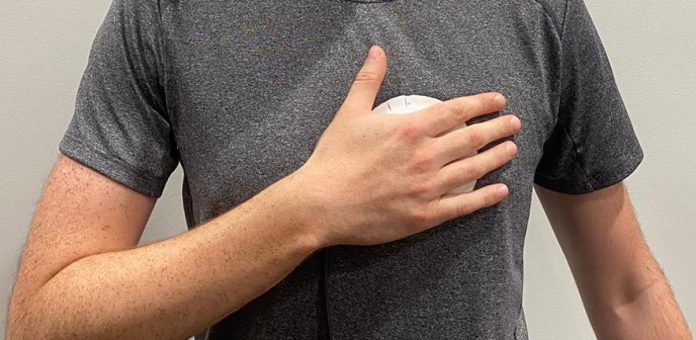Researchers from the University of Cambridge have designed a handheld device that could potentially replace stethoscopes in heart valve disease screening
A team from the University of Cambridge has developed a device that makes heart sound recording accurate and accessible, suitable for heart valve disease detection. Unlike a stethoscope, the device works well even if it’s not placed precisely on the chest: its larger, flexible sensing area helps capture clear heart sounds compared to traditional stethoscopes.
“This device could become an affordable and scalable solution for heart health screening, especially in areas with limited medical resources,” commented Anurag Agarwal.
Heart valve disease: ‘The next cardiac epidemic’
Heart valve disease has a prognosis worse than many forms of cancer and has been touted as the ‘next cardiac epidemic’. Up to 50% of patients with this condition remain undiagnosed, only seeing medical professionals once the disease has advanced and they are facing significant complications.
In the UK, the NHS and NICE have made early detection of heart valve disease a key goal, improving patients’ quality of life and decreasing costs.
Typically, heart valve disease is diagnosed by an examination with a stethoscope or auscultation. However, only 38% of patients who present their symptoms to a GP receive an examination with a stethoscope.
“The symptoms of VHD can be easily confused with certain respiratory conditions, which is why so many patients don’t receive a stethoscope examination,” said Professor Anurag Agarwal from Cambridge’s Department of Engineering, who led the research. “However, the accuracy of stethoscope examination for diagnosing heart valve disease is fairly poor, and it requires a GP to conduct the examination.”
The ’gold standard’ for diagnosing heart valve disease is an echocardiogram, but this can only be done in a hospital, and waiting lists are incredibly long.
“To help get waiting lists down, and to make sure we’re diagnosing heart valve disease early enough that simple interventions can improve quality of life, we wanted to develop an alternative to a stethoscope that is easy to use as a screening tool,” said Agarwal.
Making heart screening accessible
The researchers have developed a handheld device – the size of a drinks coaster- that any health professional can use. Compared to just one in a stethoscope, the device has six sensors, allowing for more accurate readings and easier use by anyone due to its larger surface area. Between the sensors is a gel that absorbs vibration so the sensors do not interfere with each other.
Furthermore, the device contains materials that can transmit vibration; therefore, it can be used on clothes. This is particularly useful in scenarios like community screening programmes.
The device was tested on healthy participants with different body shapes and sizes, and their heart sounds were recorded. The researcher’s next steps will be to test the device in a clinical setting on various patients against results from an echocardiogram.
To support the tool, the researchers designed a machine-learning algorithm that automatically uses recorded heart sounds to detect signs of heart valve disease. Early tests of the algorithm suggest that it outperforms GPs in detecting heart valve disease.
“If successful, this device could become an affordable and scalable solution for heart health screening, especially in areas with limited medical resources,” said Agarwal.
The researchers hope the device could be helpful to triage patients waiting for an echocardiogram so those with signs of valve disease can be seen in a hospital sooner.








